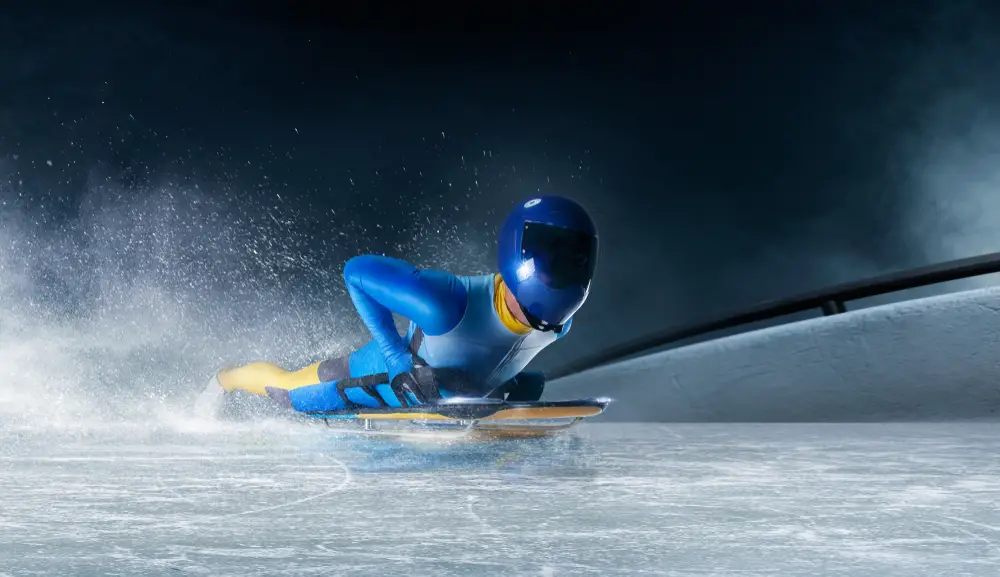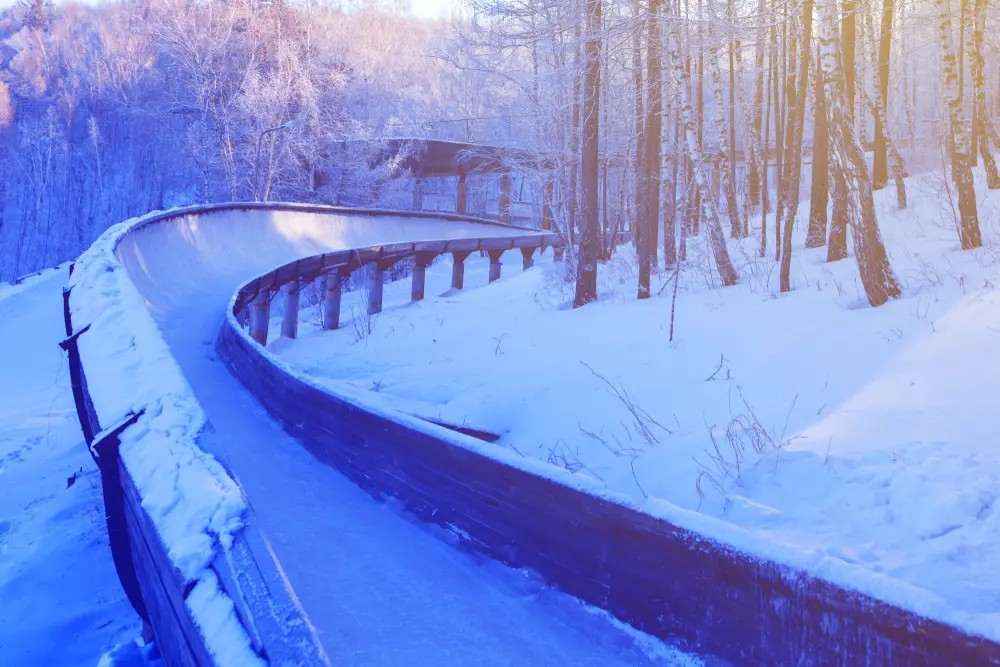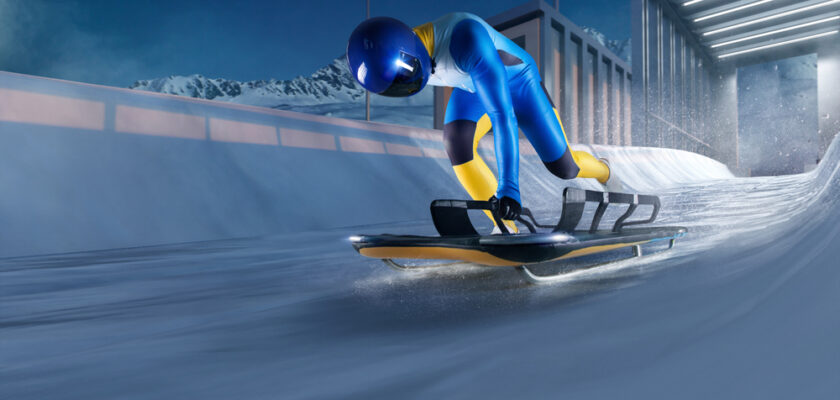Bobsled, also known as bobsleigh, is a very exciting winter sport that combines speed, strategy and teamwork. The sport was born in Switzerland at the end of the 19th century and has evolved significantly over the years, becoming one of the most eagerly awaited events at the Winter Olympics.
Before getting to know the rules of bobsled, it’s worth noting that the race involves teams racing down an icy track at high speed in an aerodynamic sled, competing against the clock to record the fastest time.
To ensure the safety of athletes and equality in competitions, several rules have been established by the International Bobsleigh and Skeleton Federation (IBSF). These rules range from technical specifications for the sleds used in the sport to regulations on the behavior of the athletes.
It’s time to explore the rules of bobsled!
Open your Betano account and get up to 1,000 reais in bonuses.
PIX payments, live games and super odds!Click here to open your account!

Bobsled rules: complete list
- Sled
- Equipment and safety
- Safety on the track
- Team
- Competitions
- Infractions and penalties
Bobsled rules: sled
The sleds used in bobsled are designed to very strict specifications to ensure both the safety and maximum performance of the athletes. Check out the specifications!
- Size and weight: the maximum sled length is limited to 3.8 meters for two-seater sleds, and 2.7 meters for four-seater sleds.
The weight of the sled may not exceed 390 kg for two-seater sleds, and 630 kg for four-seater sleds.
- Permitted materials: the sled must be built with materials that guarantee safety and resistance.
Generally, materials such as stainless steel and carbon fiber are used in its construction, which provide lightness and durability.
- Steering system: the bobsled must be equipped with an efficient steering system, which allows riders to maneuver precisely around the track’s curves.
Bobsled rules: safety equipment
Athlete safety is a top priority in bobsled, and this is reflected in the rules relating to safety equipment:
- Helmet: all athletes must wear helmets that meet the safety standards set by the IBSF. They are designed to protect athletes’ heads in the event of collisions or flips.
- Safety belts: each athlete must be equipped with safety belts that ensure they remain firmly attached to the sled during the race.
- Chin protectors: chin protectors are essential to ensure that there is no serious injury in cases of crashes
- Gloves: it is crucial that athletes wear gloves during races, protecting their hands from injury.
Bobsled rules: safety on the track
To ensure the safety not only of the athletes, but also of the public, there are strict guidelines for the construction and maintenance of bobsled tracks. Check them out!
- Track design: tracks should be designed with curves and straights that allow for high speeds, but also offer a technical challenge to riders.
- Safety barriers: along the track, safety barriers are installed, such as ice pads and nets, protecting athletes in the event of an accident.
- Regular inspections: The tracks undergo regular inspections to ensure that they comply with the safety standards set by the IBSF.
Bobsled rules: team
The composition of the bobsled team is a fundamental part of the sport and is regulated to ensure fairness and safety. Learn about these regulations:
- Number of athletes: bobsled teams can consist of two or four people, depending on the type of sled used.
Each athlete plays a specific role, either as pilot, pusher or both.
- Minimum and maximum weight: in order to balance the teams, there are minimum and maximum weight limits set for the athletes.
This rule avoids unfair advantages due to competitors being overweight or underweight.
Bobsled rules: competition
Competition rules exist to define how races are run and how winners are chosen. Find out more!
- Race format: races generally consist of four descents, with the times combined to determine the winner.
There are also individual events, such as the Skeleton, which follow a different format.
- Penalties: penalties can be applied in bobsled for violations of the rules, such as exiting the track or undue interference with the opposing sled.
- Starting rules: there are also specific rules for the start of the race, including the waiting time before the initial push and the starting position of the sled.
Bobsled rules: infractions and penalties
Check out the infractions that can be committed in bobsled and what the consequences are.
- False Start: starting before the official start signal can result in disqualification from the race.
- Time exceeded: spending more time than allowed in the start zone results in loss of time or disqualification.
- Excess weight: the sled, including competitors and equipment, must not exceed the maximum permitted weight in order not to be disqualified from the race.
- Sled dimensions: if the sled does not comply with the technical specifications, the athlete may be disqualified until the sled complies.
- Leaving the track: if the sled leaves the boundaries of the track during the descent, there is disqualification from the race.
- Intentional contact: causing intentional contact with another sled results in disqualification and possible suspension.
- Finish line: failure to follow the correct procedures when crossing the finish line can end in time penalties or disqualification.
- Unsportsmanlike conduct: inappropriate behavior, such as arguing with officials or opponents, or the use of offensive language, can result in a warning, disqualification and possible suspension.
- Illegal modifications to the sled: it is forbidden to make unpermitted changes to the sled in order to gain a competitive advantage. If this happens, there may be a disqualification.
- Unapproved equipment: the athlete who uses any equipment that has not been approved by the International Bobsled and Skeleton Federation (IBSF) may be disqualified from the race.
- Failed technical inspection: if the runner fails to pass the pre-race technical inspections they are disqualified until the failure is corrected.
- Inadequate documentation: failure to provide the necessary documentation for competitors and the sled is prohibited and may result in disqualification.
- Safety equipment: if the athlete does not wear helmets, seat belts or other mandatory safety equipment, they may be disqualified or suspended.

Bobsled rules: complete list
- Sled
- Equipment and safety
- Safety on the track
- Team
- Competitions
- Infractions and penalties
Bobsled rules
If you enjoyed learning about the rules of bobsled, take the opportunity to keep following the site and stay up to date with everything about this universe! Don’t forget to check out our other articles, news, lists, glossaries and much more about the world of sports!



